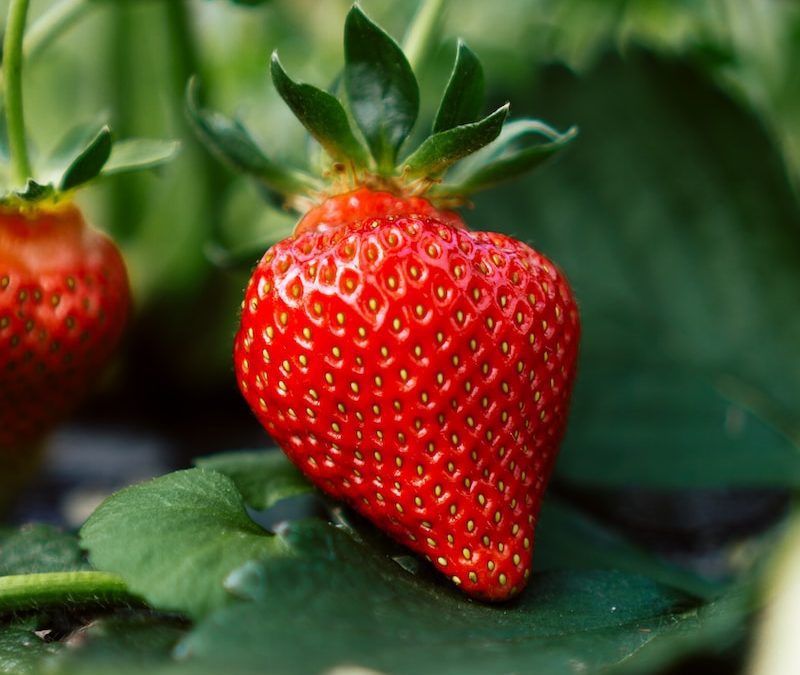Strawberries are a delightful treat that many gardeners enjoy growing. These fruits not only add a pop of color to your garden but also offer numerous health benefits due to their high vitamin C content. In this comprehensive guide, we’ll go over everything you need to know about how to grow strawberries.
Contents
- 1 Selecting the Right Strawberry Variety
- 2 Choosing and Preparing the Planting Site
- 3 Planting Strawberries
- 4 Caring for Strawberry Plants
- 5 Harvesting and Storing Strawberries
- 6 Propagating Strawberries
- 7 Common Problems and Solutions
- 8 Using Raised Beds or Containers
- 9 Companion Planting for Strawberries
- 10 Overwintering Strawberry Plants
Selecting the Right Strawberry Variety
There are three main types of strawberry plants: June-bearing, everbearing, and day-neutral. June-bearing strawberries produce a large crop in June, everbearing strawberries give fruits in the spring and late summer, while day-neutral strawberries continue to fruit throughout the growing season.
It’s important to choose a variety based on your geographical location and personal preferences. For instance, if you wish to harvest all at once, perhaps for making jam, then June-bearing strawberries would be a good choice.
Choosing and Preparing the Planting Site
Strawberries need full sun for at least six hours each day and well-drained soil with a pH between 5.5 and 7.0. They also appreciate a site that hasn’t grown strawberries, tomatoes, peppers, or potatoes for at least three years due to the risk of verticillium wilt.
You can prepare your garden for planting by incorporating a layer of compost or well-rotted manure into the soil. This will improve soil fertility and water retention.
Planting Strawberries
Strawberry plants can be grown from seeds, but it’s more common to start with young plants, also known as “runners”. When planting, make sure that the crown (where the leaves emerge) is level with the soil surface. Planting too deep may cause the crowns to rot, while planting too shallow can lead to drying out.
Space your plants about 18-24 inches apart in rows that are 4 feet apart. After planting, water them thoroughly.
Caring for Strawberry Plants
Regular watering is critical, particularly during dry periods. Strawberries require approximately one inch of water per week. You can use a rain gauge to monitor rainfall and adjust your watering accordingly.
Moreover, feed your strawberries with a balanced fertilizer after the first harvest, and again in early autumn. Protect your plants from birds by covering them with a net as the fruits begin to ripen.
Harvesting and Storing Strawberries
Strawberries are ready for harvest when they are fully red. Pick them with the caps and stems attached to prolong their freshness. After harvesting, place the strawberries in the refrigerator immediately. They can be stored in the refrigerator for a few days, or can be frozen for long-term storage.
Propagating Strawberries
Strawberries are unique in that they reproduce not only through seeds, but also through runners. Runners are long stems that grow out of a strawberry plant, touch the ground, and take root, forming a new plant. This process is called propagation.
To propagate your strawberries, select healthy, vigorous parent plants and pin the runner into the soil where you want the new plant to grow. You can use a stone or a U-shaped wire to keep the runner in place. Once the new plant has taken root, you can cut the runner from the parent plant.
By using runners, you can quickly and easily increase your strawberry harvest each year without having to purchase new plants.
Common Problems and Solutions
Strawberries, like any plant, can suffer from a variety of pests and diseases. Slugs, birds, and nettle weevils are common pests that can damage your strawberry plants. To combat these, you can use bird netting or slug pellets that are safe for use in home gardens.
Verticillium wilt, grey mould, and red stele are diseases that commonly affect strawberry plants. These can be prevented by practicing good crop rotation and by ensuring your strawberries have a well-drained planting site. In case of disease, infected plants should be removed and destroyed to prevent the spread of the disease.
Using Raised Beds or Containers
If you don’t have a lot of space, or if your soil isn’t ideal for growing strawberries, consider using raised beds or containers. Raised beds allow you to control the soil composition and drainage, and they can also help reduce the incidence of soil-borne diseases and pests.
Containers, on the other hand, offer the benefit of mobility. You can move your strawberry plants to follow the sun, or to protect them from severe weather. Strawberries grown in containers may need more frequent watering and feeding than those grown in the ground, but they can be just as productive and satisfying to grow.
Remember, whether you choose to grow in containers or raised beds, make sure your strawberry plants get plenty of sun, have good drainage, and get enough water and nutrients.
When selecting containers, you might consider special strawberry planters, which have pockets along the sides for additional plants. Here’s an example of a strawberry planter on Amazon.
Companion Planting for Strawberries
Companion planting is a method of gardening where different plants are grown together for mutual benefit. Certain plants can help each other by deterring pests, enhancing growth, or improving flavor.
When growing strawberries, some good companion plants include borage, which deters insects and may enhance the flavor of strawberries. Caraway can attract beneficial insects that prey on common strawberry pests. Conversely, avoid planting strawberries near plants in the cabbage family, as they tend to attract similar pests.
Overwintering Strawberry Plants
In colder climates, it’s essential to protect your strawberries over the winter to ensure a bountiful harvest the next year. After the first hard frost, cover your strawberry plants with a layer of straw or mulch about 4-6 inches thick. This will insulate the plants and protect them from freeze-thaw cycles that can heave plants out of the ground.
Come spring, when the danger of hard frost has passed, remove the mulch, allowing the plants to emerge and resume growth. Be cautious not to remove the mulch too soon, as a late frost can still cause significant damage to your plants.


